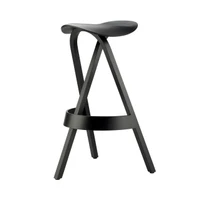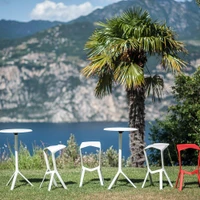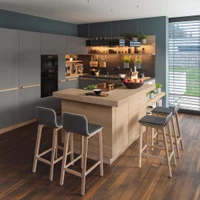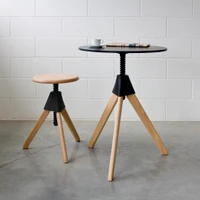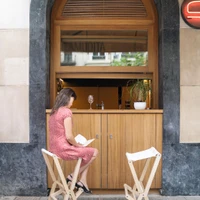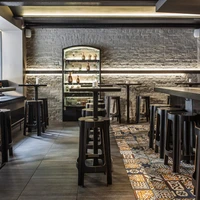Stooled up: designer bar stools to stand by and sit on
Bar stools make any flat surface suitable for drinking, dining or working in comfort and style. With so many sizes, materials, features and applications available, it’s time to sit up and take notice.
July 5, 2022 | 10:00 pm CUT
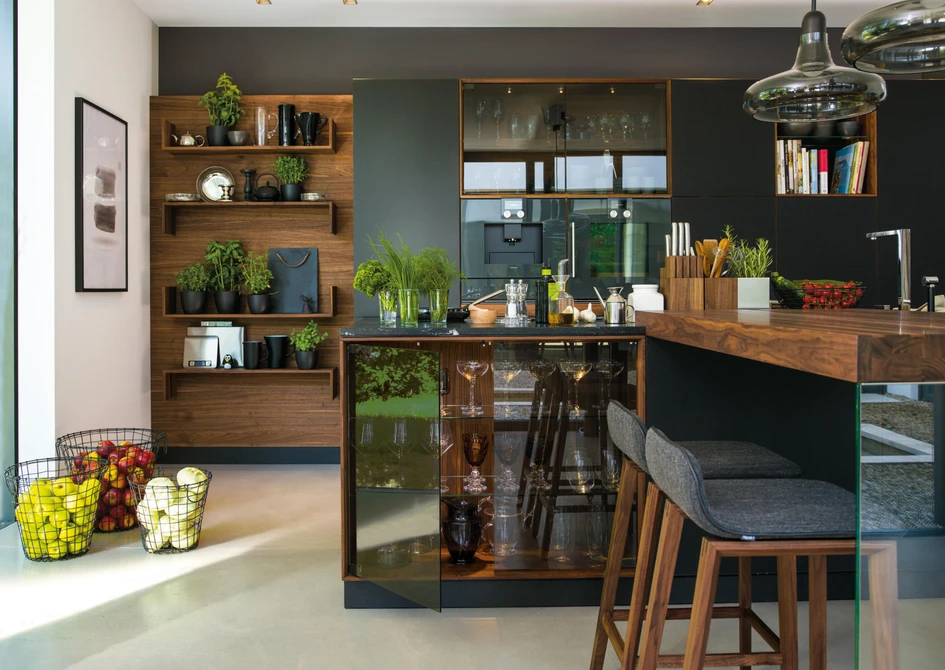
An imperative design choice at home or in hospitality settings, bar stools mix comfort with function, while their varying materials and styles can blend into or contrast with any environment
"
Stools swap the greater comfort of a chair for increased functionality, movability and adjustability

Both Riva 1920’s carved Coppa stool (top) and Thonet’s bentwood 404H stool (bottom) use the strength and natural look of wood to create sensual forms, in very different ways
Make up: bar stool materials
Wood is a natural, tactile material that’s both strong and formable. It’s a natural and obvious choice, then, for Riva 1920’s Coppa stool. Carved from a single block of cedar wood, Coppa has a simple, stable construction. But the block form can be heavy and thus difficult to manoeuvre. Thonet’s historic bentwood manufacturing process features heavily in the brand’s curved 404H bar stool, meanwhile, with bent laminate and moulded plywood making up its strong, but lighter form.

The Miura stool (top) from Plank injection-moulds polypropylene around a steel frame for rigidity, while BD Barcelona’s Jamaica Stool (bottom) stays stable with a five-point star base
Base camp: bar stool bases
With more stability and additional visual interest, three-, four- or five-point bases are a common choice. Bonaldo’s Plumage stool, for example, utilises all the aforementioned materials at once with stunningly contrasting colour and texture. If clean, straight lines are your bag, however, then fixing one leg to each seat corner provides a nicely squared, ordered quality. With four straight edges, a line of stools like Team 7’s Ark has a pleasingly organised military look to it, when they’re all standing to attention at the bar."
With more stability and additional visual interest, three-, four- or five-point bases are a common choice

Although heavier and more difficult to move, bar stools with thicker upholstered backs like Minotti’s Aston stool support and envelop the whole lower back
Balancing act: bar stool comfort vs weight
This balance between comfort and weight, both visual and physical, applies at the other end of the stool, too. Flat seats, either upholstered or moulded for comfort, are easier to lift and move, but those that put more weight on the importance of comfort, like Minotti’s Aston stool, feature larger curved backrests that hold the full lower back in place.

The DamST stool (top) effortlessly integrates armrests, the teardrop-shaped Fiorile stool (middle) reaches the perfect height and users can take the Tom & Jerry corkscrew stool (bottom) for a spin

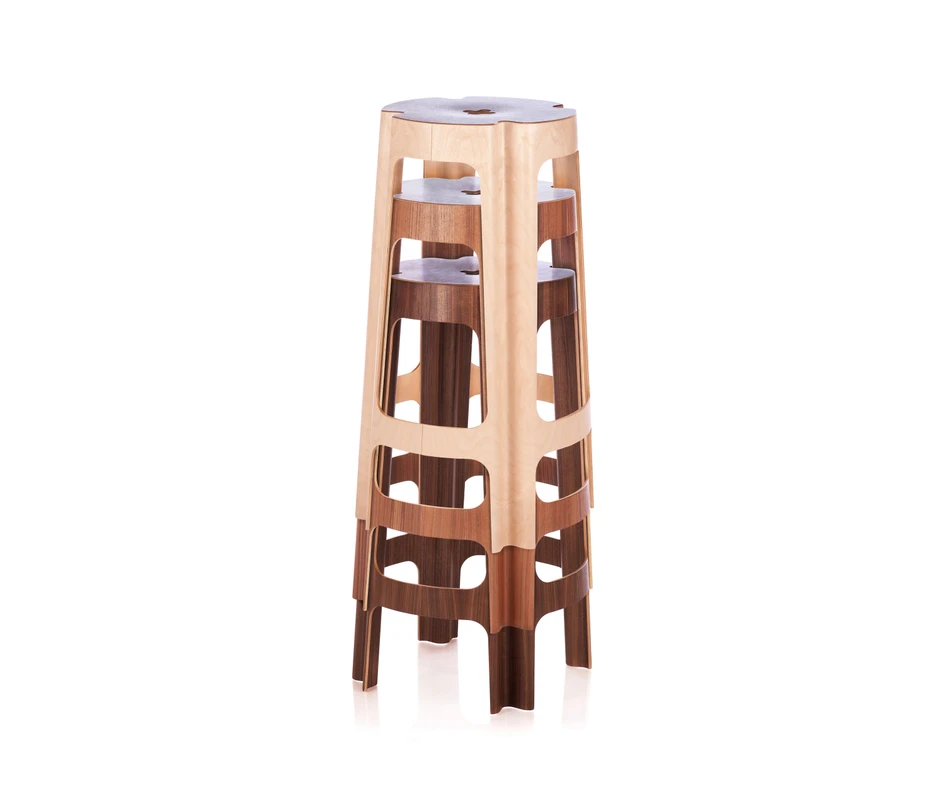
Both Dvelas’ Ris stools (top) and Riga Chair’s Bloom Bar stools (middle, bottom) are perfect for temporary hospitality use, either folding or stacking away neatly
Temporary function: bar stools that are easy to store
With the ability to tuck themselves under a counter, height-adjustable stools are increasingly functional, especially those that lie flat to aid cleaning. But the temporality of modern hospitality venues can mean stools need to be cleared away and stored elsewhere, often on a daily basis. Folding stools slim themselves down, but the extra movement in their joints puts additional strain on their construction. The use of thick plywood in Dvelas’ Ris high stools brings strength and stability, while the use of recovered sails gives rigidity and flex."
The temporality of modern hospitality venues can mean stools need to be cleared away and stored elsewhere, often on a daily basis
Project Gallery


